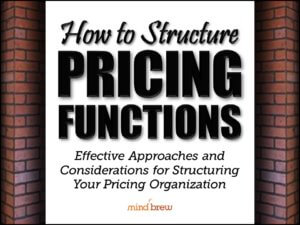While preparing for a subscriber-only training seminar, “Getting the Most Out of Price Segmentation,” I couldn’t help thinking back to a question I was asked while talking to a group of third-year marketing students at a local university…
During the Q&A portion of my presentation, a student asked, “In your opinion, what’s the most important ‘P’ in the marketing mix—product, promotion, price, or place?” Since my presentation was all about pricing, I suppose Mr. Smartypants thought he already knew what my answer would be and was throwing me a bit of a softball.
But even the professor was a little surprised when I responded, “The most important aspect isn’t actually one of the four P’s at all—those are all secondary decisions. You need to have your market segmentation and targeting decisions right for any of the four P’s to have any power.”
Price segmentation is similar in that it’s a foundational prerequisite to so many other aspects of pricing. From setting product prices and creating discounting guidelines to monitoring pricing performance and even driving adoption in the field, the effectiveness of all of these other activities is largely determined by the accuracy and relevance of your underlying price segmentation model.
But there’s another similarity as well…
Just as these budding marketers were focusing too much attention on the secondary decisions, far too many pricing people are viewing segmentation as being just one of many items on their checklist—and the relative importance is getting lost:
- They’ll prioritize getting those analytical views and reports built—not recognizing that those reports and views will fail to reveal anything of significant value if they’re not showing true apples-to-apples comparisons.
- They’ll focus on driving enforcement and compliance—not realizing that discounting in the field is often a direct result of inaccurate pricing models that fail to address the different segments in the marketplace.
- They’ll devise value-based pricing structures that look good on paper—not recognizing that the entire notion of “value” is in the eye of the beholder and can change dramatically from segment to segment.
The point is that while there are many aspects to pricing, they are not equally important or equally powerful. In fact, many aspects of pricing are secondary in that they derive most of their power and influence from the more foundational and primary aspects of pricing. And price segmentation is definitely one of those foundational elements.
So…are you treating price segmentation like a prerequisite…or an elective?













